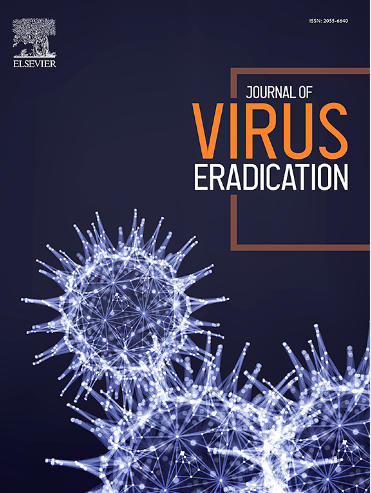Staging of immuno-virological dynamics during acute HIV infection in a Belgian prospective cohort study
IF 3.5
4区 医学
Q2 IMMUNOLOGY
引用次数: 0
Abstract
Background
The events during acute HIV infection (AHI) set the stage for the subsequent course of the disease. Early initiation of antiretroviral therapy (ART) has been associated with favorable immunovirological outcomes, yet the precise impact of ART timing during AHI remains unclear, particularly on lymphoid tissues.
Materials and methods
The ACS cohort is a prospective cohort study in Belgium, collecting longitudinal clinical data and human bodily material (HBM) from people diagnosed and treated during AHI. The aim of the cohort is to study the impact of ART initiation during AHI on HIV reservoir and immune dysfunction in peripheral blood and anatomical sanctuary sites, as well as its effect on the gut microbiome. The cohort consists of two HBM sampling trajectories: one limited (blood, stool and leukapheresis) and a more extensive one (blood, stool, leukapheresis, colonoscopy, inguinal lymph node excision and lumbar puncture). Here we describe the baseline characteristics, immunovirological outcomes, safety and tolerability of HBM sampling.
Results
Between March 2016 and April 2024, 47 participants were enrolled, predominantly men who have sex with men (MSM), with a median age of 36 years [IQR 30–43.5]. Almost 90 % of participants initiated ART within 72 h after study inclusion, irrespective of HBM sampling trajectory. The timing of ART initiation according to the Fiebig stage did not significantly impact immune recovery (CD4/CD8 ratio ≥1) or the time to viral suppression. Approximately 40 % of participants opted for the extensive HBM sampling trajectory during AHI. However, the participation rate for the extensive trajectory decreased by nearly half at the longitudinal follow-up timepoint. In general, study-related procedures were safe and well-tolerated, with limited procedure-related adverse events (AEs). Inguinal lymph node excision was associated with the highest AE rate, in line with previous reports.
Conclusions
Our findings reaffirm the beneficial effect of ART initiation during AHI on long term immunovirological outcomes, regardless of Fiebig stage at treatment initiation. Additionally, we demonstrate that the collection of HBM during and longitudinally after AHI is safe and feasible, without compromising time to ART initiation. Cohorts that integrate comprehensive clinical data with high-quality HBM samples are essential to longitudinally study the impact of early ART on reservoir dynamics and immune responses across various anatomical sites after AHI.
比利时一项前瞻性队列研究对艾滋病毒急性感染期间的免疫--静脉动态进行分期
背景HIV急性感染(AHI)期间发生的事件为随后的病程奠定了基础。材料与方法 ACS队列是比利时的一项前瞻性队列研究,它收集了在急性艾滋病感染期间接受诊断和治疗的患者的纵向临床数据和人体材料(HBM)。该队列的目的是研究在 AHI 期间开始抗逆转录病毒疗法对外周血和解剖禁区部位的艾滋病病毒库和免疫功能障碍的影响,以及对肠道微生物组的影响。该队列由两个 HBM 采样轨迹组成:一个是有限的采样轨迹(血液、粪便和白细胞),另一个是更广泛的采样轨迹(血液、粪便、白细胞、结肠镜检查、腹股沟淋巴结切除术和腰椎穿刺术)。结果在 2016 年 3 月至 2024 年 4 月期间,47 名参与者入组,主要是男男性行为者(MSM),中位年龄为 36 岁[IQR 30-43.5]。近 90% 的参与者在纳入研究后 72 小时内开始接受抗逆转录病毒疗法,与 HBM 采样轨迹无关。根据 Fiebig 阶段开始抗逆转录病毒疗法的时间对免疫恢复(CD4/CD8 比率≥1)或病毒抑制时间没有显著影响。大约 40% 的参与者在 AHI 期间选择了广泛的 HBM 采样轨迹。然而,在纵向随访时间点,广泛采样轨迹的参与率下降了近一半。总体而言,与研究相关的手术安全且耐受性良好,与手术相关的不良事件(AEs)有限。结论我们的研究结果再次证实了在 AHI 期间开始抗逆转录病毒疗法对长期免疫病理结果的有利影响,无论开始治疗时的 Fiebig 阶段如何。此外,我们还证明了在 AHI 期间和 AHI 后纵向收集 HBM 是安全可行的,不会影响开始抗逆转录病毒疗法的时间。综合全面的临床数据和高质量的 HBM 样本的队列对于纵向研究早期抗逆转录病毒疗法对 AHI 后不同解剖部位储库动态和免疫反应的影响至关重要。
本文章由计算机程序翻译,如有差异,请以英文原文为准。
求助全文
约1分钟内获得全文
求助全文
来源期刊

Journal of Virus Eradication
Medicine-Public Health, Environmental and Occupational Health
CiteScore
6.10
自引率
1.80%
发文量
28
审稿时长
39 weeks
期刊介绍:
The Journal of Virus Eradication aims to provide a specialist, open-access forum to publish work in the rapidly developing field of virus eradication. The Journal covers all human viruses, in the context of new therapeutic strategies, as well as societal eradication of viral infections with preventive interventions.
The Journal is aimed at the international community involved in the prevention and management of viral infections. It provides an academic forum for the publication of original research into viral reservoirs, viral persistence and virus eradication and ultimately development of cures.
The Journal not only publishes original research, but provides an opportunity for opinions, reviews, case studies and comments on the published literature. It focusses on evidence-based medicine as the major thrust in the successful management of viral infections.The Journal encompasses virological, immunological, epidemiological, modelling, pharmacological, pre-clinical and in vitro, as well as clinical, data including but not limited to drugs, immunotherapy and gene therapy. It is an important source of information on the development of vaccine programs and preventative measures aimed at virus eradication.
 求助内容:
求助内容: 应助结果提醒方式:
应助结果提醒方式:


